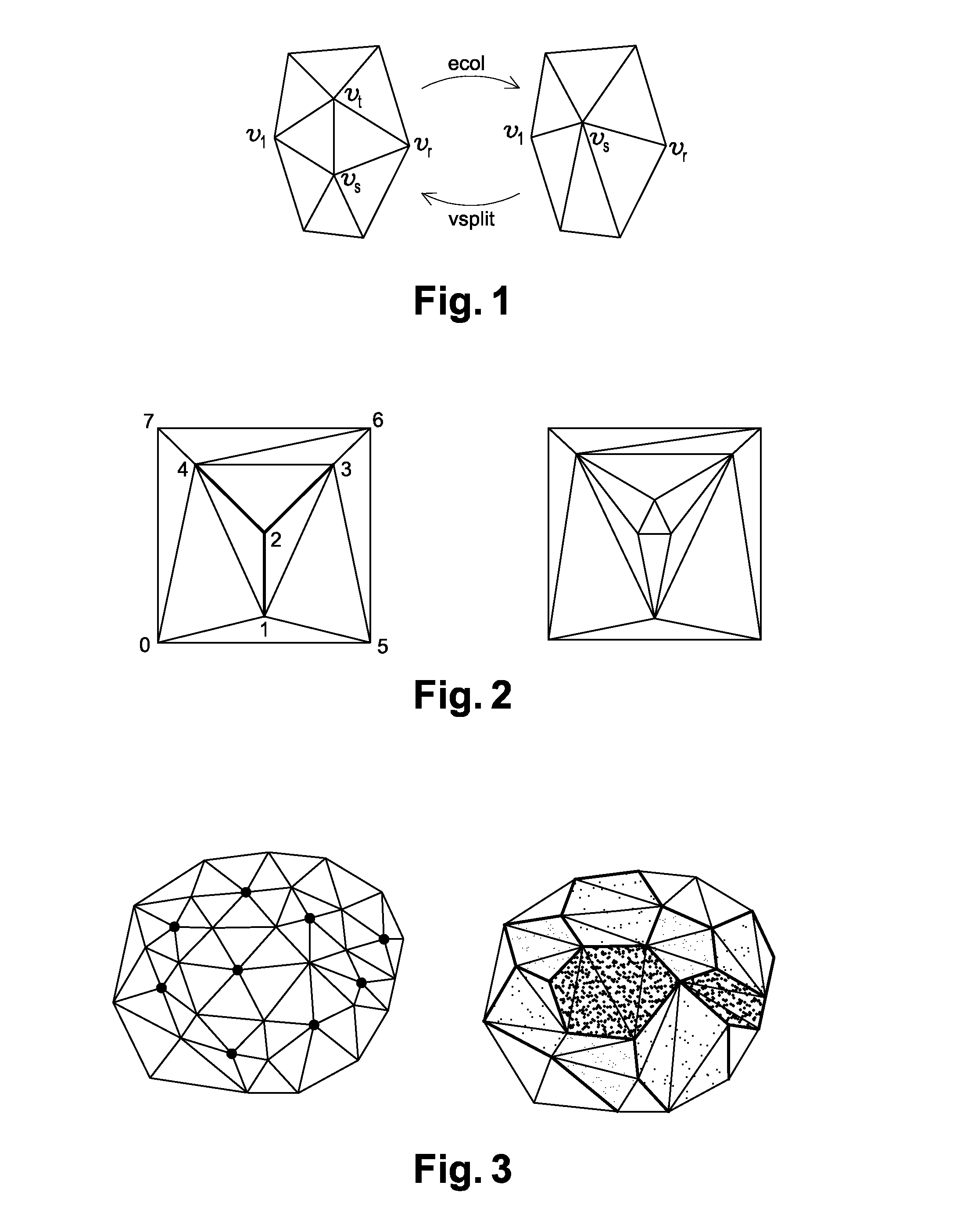Method for compressing/decompressing a three-dimensional mesh
a three-dimensional mesh and compression method technology, applied in image data processing, character and pattern recognition, instruments, etc., can solve the problems of insufficient capacity of terminals, high computational costs, and high computational costs
- Summary
- Abstract
- Description
- Claims
- Application Information
AI Technical Summary
Benefits of technology
Problems solved by technology
Method used
Image
Examples
Embodiment Construction
[0022]To this end, the invention envisages in a first aspect a method for encoding / decoding three-dimensional meshes of dots or vertices connected in the form of facets delimited by edges; the mesh M is defined by connectivity data T and geometry data G;
the method comprises:
[0023]a step of lossless encoding of the connectivity data T into encoded connectivity data Tc,[0024]a step of iteratively generating a progressive mesh hierarchy, i.e. a set of meshes with progressive levels of detail, PM(M*),[0025]a step of generating a piecewise smooth approximation M* of the original mesh M, from the mesh connectivity T; this smooth approximation M* is described as follows:
[0026]a. the encoded connectivity information Tc (the list of triangles of the mesh M),
[0027]b. a small number N of control dots C=(ck)kε{1, . . . , N}, previously defined and
[0028]c. a set of indexes (their references in the mesh) S of edges, called protruding edges, of the mesh M, identified beforehand.[0029]the progressi...
PUM
 Login to View More
Login to View More Abstract
Description
Claims
Application Information
 Login to View More
Login to View More - R&D
- Intellectual Property
- Life Sciences
- Materials
- Tech Scout
- Unparalleled Data Quality
- Higher Quality Content
- 60% Fewer Hallucinations
Browse by: Latest US Patents, China's latest patents, Technical Efficacy Thesaurus, Application Domain, Technology Topic, Popular Technical Reports.
© 2025 PatSnap. All rights reserved.Legal|Privacy policy|Modern Slavery Act Transparency Statement|Sitemap|About US| Contact US: help@patsnap.com



